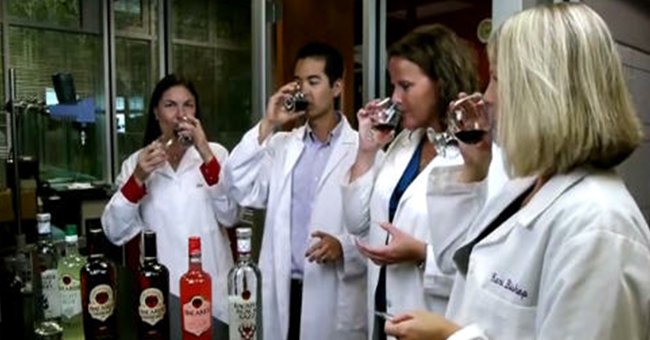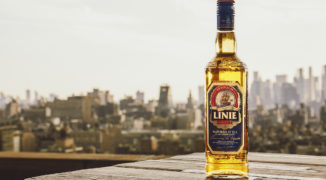There’s a dizzying array of flavored spirits out there, from cotton candy vodka to maple whiskey to whipped cream rum. We had to wonder: who comes up with them?
Kari Bishop, a senior scientist at Bacardi, finds the grocery store inspiring. What would be a chore to some is, for her, an opportunity to think of new possible flavors. “I get inspiration everywhere,” she says.
But before an inspiration gets the green-light to be made into a flavored rum, there’s a lot of market research along the way. “The good ideas always find a home,” she explains. “When we start to develop a flavor, the first thing we do is go back to the consumer and try to understand who they are and the environment they’re going to be drinking in.” After all, factors like the sights and sounds of your environment can actually influence your perception of taste.
The oldest flavored spirits were simple homemade infusions, some often even used for medicinal reasons. Today, global markets make thousands of flavors available to liquor makers, while brands want to make every bottle of a flavor as consistent as possible, meaning that there’s a lot of chemistry required. A new flavor takes months and, in some cases, years of experimenting to develop and perfect. Bishop said that she’s worked on projects that have gone through 40 to 100 different formulas.

It’s clear that some flavors would be infeasible without the help of artificial flavors — the idea of infusing vodka with globs of cookie dough is pretty silly. Liquor makers aren’t required to provide ingredient labels or nutritional facts on their bottles, so they don’t have to say if a product contains artificial flavors or not. Some brands are upfront about it — for example Calico Jack’s Cake Rum says it contains natural and artificial flavors on the front of the bottle. Others have more subtle hints, like Pinnacle Vodka’s Cinnabon flavor, which describes itself as “imitation cinnamon roll flavored vodka.”
But even when liquor makers use only natural flavors, there’s still a lot of science involved in getting the taste just right. Bishop said Bacardi only uses natural flavors, but depending upon the ingredient, that might mean a direct infusion or the use of extracts. “It really depends on what the ingredient is,” she explained. “In some cases you might want to use a natural extract, so you get a much more concentrated and intense delivery, but there are other things where you only need a drop or an infusion of something.”
Once the flavor concept is fleshed out, there’s more market testing to understand the consumer’s expectation of flavor. We all have archetypal ideas of what flavors should be. Take apple, for example: we all have some idea of what an apple vodka might taste like. But if the flavor scientist gives us a sweet Macintosh apple flavor when we’re expecting a tart granny smith flavor, that could a problem. So, rounds of taste-testing make sure a flavor fits with the expectation.
In some cases, brands may venture into what’s known to flavorists as “white space.” These are flavors or flavor combinations that didn’t really exist previously. For example, Bishop helped develop Bacardi’s Dragon Berry flavor, which combines strawberry and dragonfruit. She explains that it was “a way to take something that was familiar and well-liked and blend it with something exotic and adventurous.”
Balancing the flavor of a fruit or spice against the heat of the alcohol is important, as is understanding how that taste will blend with acid and sugar in a cocktail. “Obviously, if you’re biting into a strawberry or drinking it in rum, it’s a little bit different,” said Bishop. “But trying to mimic that experience for the consumer is part of the science and creativity that we bring.”






